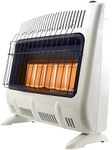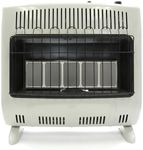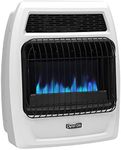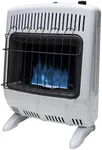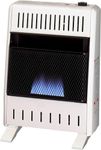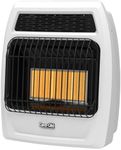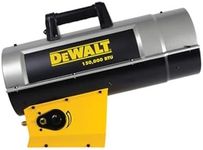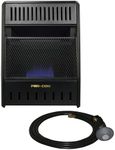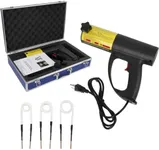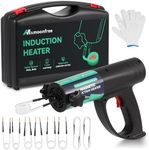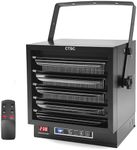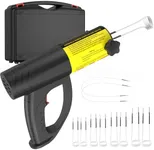Buying Guide for the Best Portable Propane Heaters With Thermostat
When choosing a portable propane heater with a thermostat, it's important to consider several key specifications to ensure you select the best model for your needs. These heaters are great for providing warmth in areas where traditional heating systems may not be available or practical. By understanding the key features and how they relate to your specific requirements, you can make an informed decision and enjoy efficient, safe, and comfortable heating.BTU RatingBTU (British Thermal Unit) rating measures the heater's heat output. This spec is crucial because it determines how much space the heater can effectively warm. Lower BTU ratings (around 3,000-5,000 BTUs) are suitable for small spaces like tents or small rooms. Medium BTU ratings (10,000-20,000 BTUs) can heat larger rooms or small cabins. Higher BTU ratings (30,000 BTUs and above) are ideal for large areas like garages or workshops. Choose a BTU rating based on the size of the area you need to heat.
Thermostat ControlA thermostat control allows you to set and maintain a desired temperature, providing consistent comfort and energy efficiency. This feature is important because it prevents overheating and conserves propane by turning the heater off when the set temperature is reached. Look for heaters with adjustable thermostats that offer a range of temperature settings. If you need precise temperature control for comfort or specific applications, a model with a digital thermostat might be the best choice.
Safety FeaturesSafety features are critical in portable propane heaters to prevent accidents and ensure safe operation. Key safety features include an oxygen depletion sensor (ODS) that shuts off the heater if oxygen levels drop too low, a tip-over switch that turns off the heater if it falls over, and an overheat protection system. These features are essential for safe use, especially in enclosed or high-traffic areas. Prioritize models with comprehensive safety features to protect yourself and others.
PortabilityPortability refers to how easy it is to move and transport the heater. This is important if you plan to use the heater in different locations or need to store it when not in use. Consider the heater's weight, size, and design features like carrying handles or wheels. Lightweight and compact models are easier to move and store, making them ideal for camping or occasional use. Heavier models with wheels are better for frequent relocation within larger spaces.
Fuel ConsumptionFuel consumption indicates how much propane the heater uses over a specific period, usually measured in pounds per hour. This spec is important for understanding operating costs and how long a propane tank will last. Lower consumption rates (around 0.1-0.2 pounds per hour) are more economical and suitable for extended use. Higher rates (0.5 pounds per hour or more) provide more heat but require more frequent refueling. Choose a model with a fuel consumption rate that balances your heating needs and fuel availability.
Ignition SystemThe ignition system is how the heater is started. Common types include manual ignition, piezo ignition, and electronic ignition. Manual ignition requires a match or lighter, which can be less convenient. Piezo ignition uses a push-button to create a spark, offering easier and safer operation. Electronic ignition provides the most convenience with a simple switch or button. If ease of use and reliability are important to you, opt for a model with piezo or electronic ignition.
